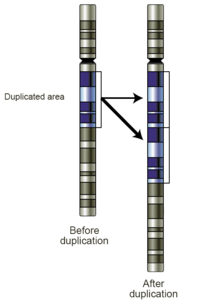
Photo from wikipedia
Premise of the Study Simple sequence repeat (SSR) or microsatellite markers have been used in a broad range of studies mostly scoring alleles on the basis of amplicon size as… Click to show full abstract
Premise of the Study Simple sequence repeat (SSR) or microsatellite markers have been used in a broad range of studies mostly scoring alleles on the basis of amplicon size as a proxy for the number of repeat units of an SSR motif. However, additional sources of variation within the SSR or in the flanking regions have largely remained undetected. Methods In this study, we implemented a next‐generation sequencing–based genotyping approach in a newly characterized set of 18 nuclear SSR markers for the carob tree, Ceratonia siliqua. Our aim was to evaluate the effect of three different methods of scoring molecular variation present within microsatellite markers on the genetic diversity and structure results. Results The analysis of the sequences of 77 multilocus genotypes from four populations revealed SSR variation and additional sources of polymorphism in 87% of the loci analyzed (42 single‐nucleotide polymorphisms and five insertion/deletion polymorphisms), as well as divergent paralog copies in two loci. Ignoring sequence variation under standard amplicon size genotyping resulted in incorrect identification of 69% of the alleles, with important effects on the genetic diversity and structure estimates. Discussion Next‐generation sequencing allows the detection and scoring of SSRs, single‐nucleotide polymorphisms, and insertion/deletion polymorphisms to increase the resolution of population genetic studies.
Journal Title: Applications in Plant Sciences
Year Published: 2018
Link to full text (if available)
Share on Social Media: Sign Up to like & get
recommendations!